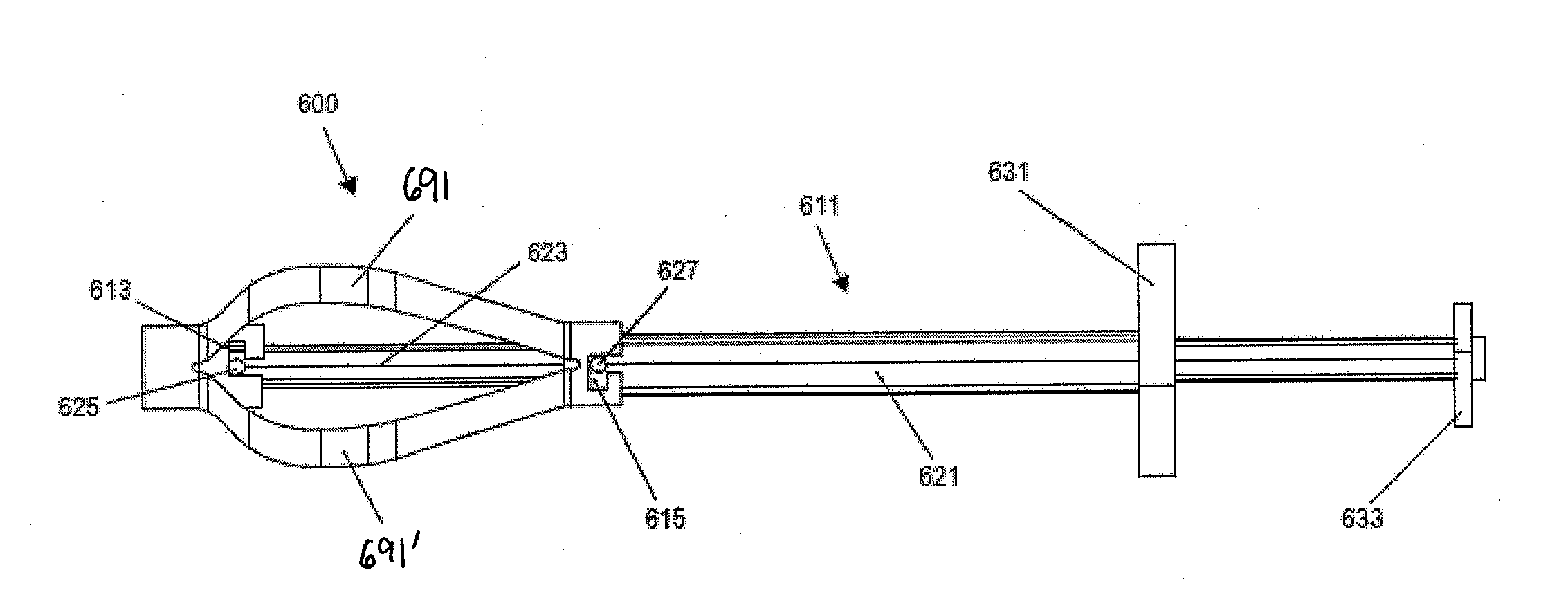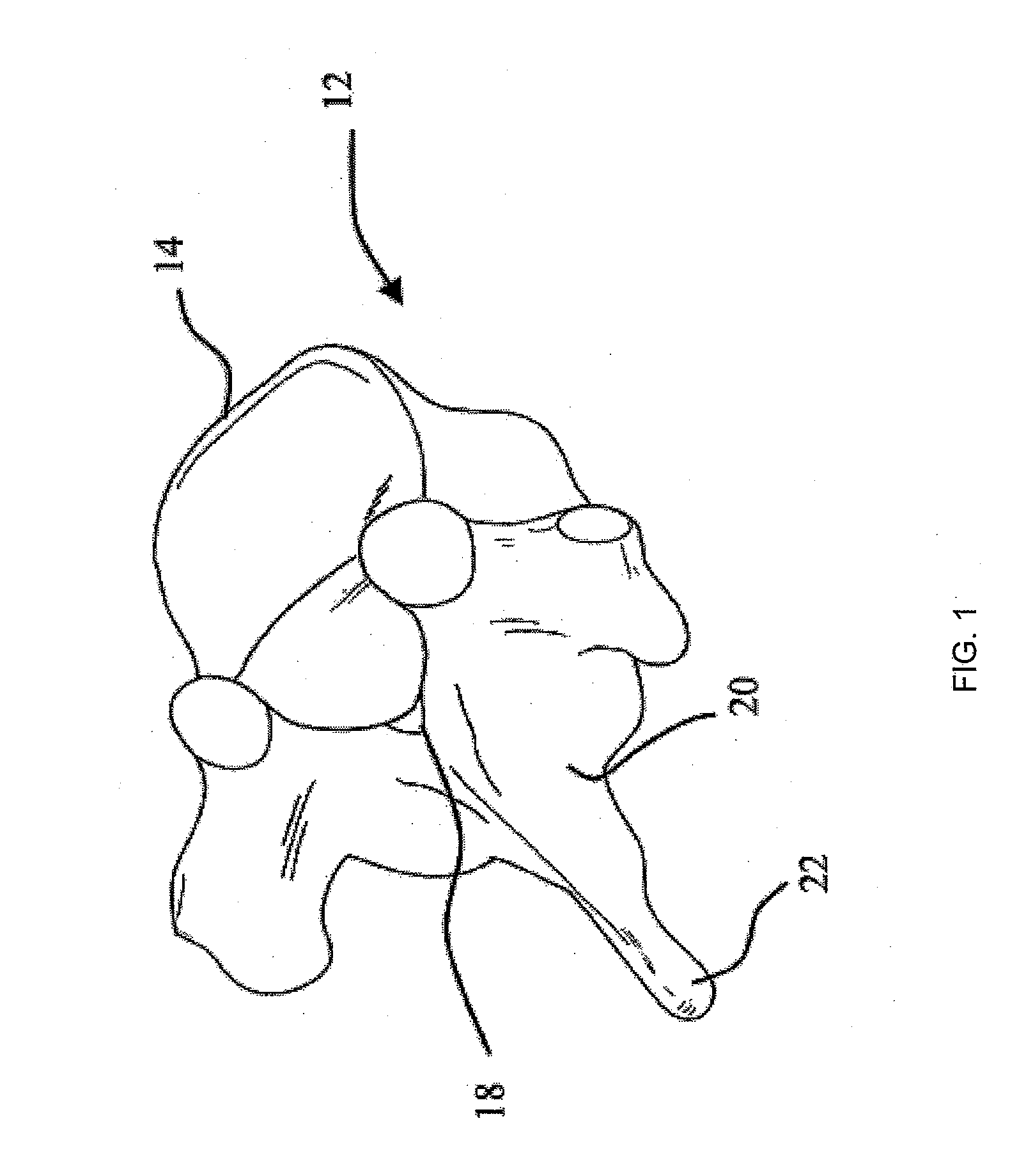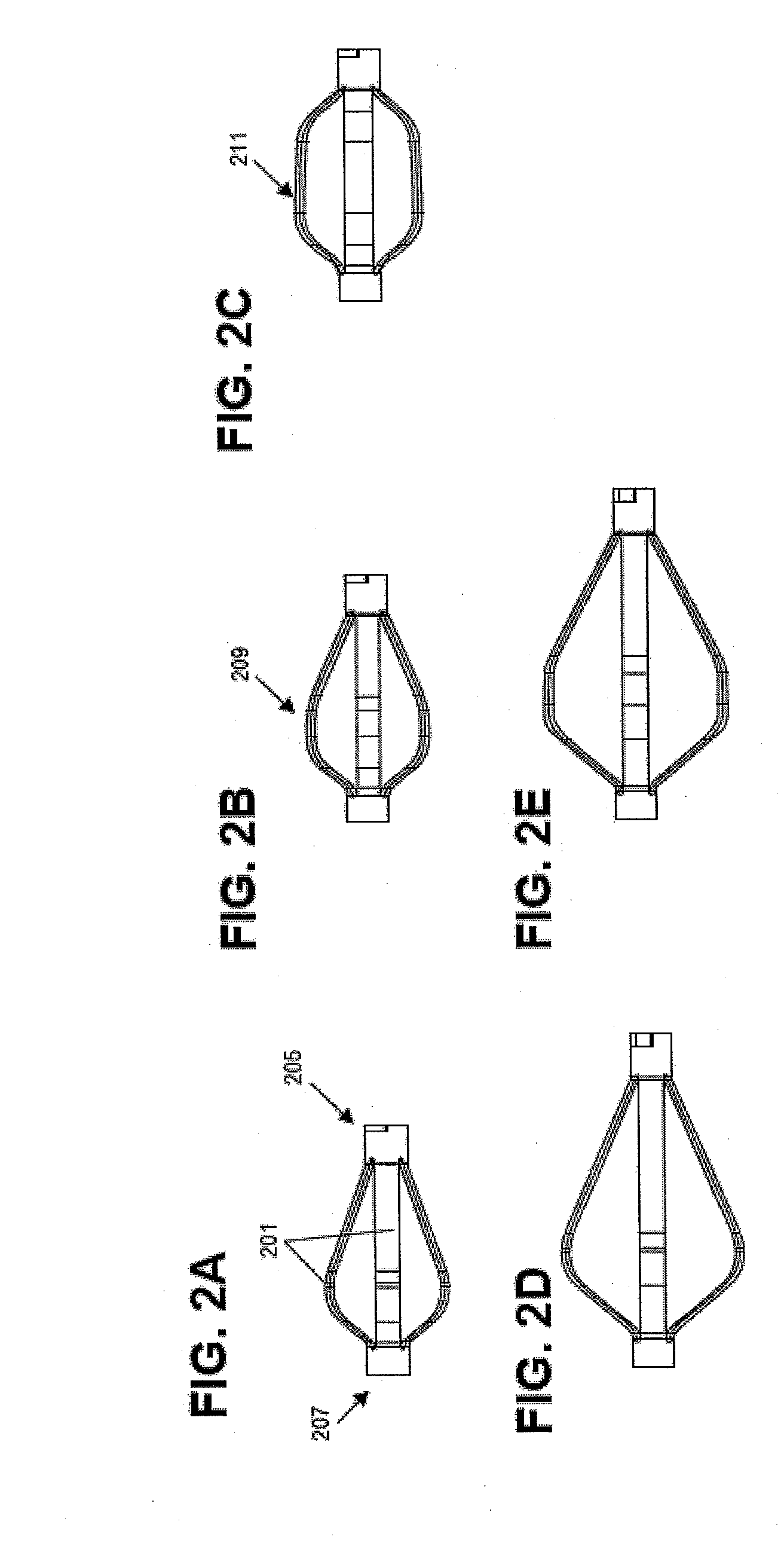Systems, devices and methods for posterior lumbar interbody fusion
a lumbar interbody and fusion technology, applied in the field of spinal surgery, can solve the problems of substantial challenges in performing plif surgery, and achieve the effect of facilitating tissue cutting, facilitating tissue cutting, and facilitating tissue cutting
- Summary
- Abstract
- Description
- Claims
- Application Information
AI Technical Summary
Benefits of technology
Problems solved by technology
Method used
Image
Examples
Embodiment Construction
[0055]The stabilization devices, systems and methods described herein may aid in posterior lumbar interbody fusion (PLIF) surgeries. The stabilization devices (also referred to as simply “devices”) described herein may be implanted into an intervertebral disc and packed with a bone graft or biologic or synthetic material to promote anchoring of the stabilization device and fusion of the vertebrae adjacent to the intervertebral disc. The devices, systems and methods described herein may be used in any appropriate body region, particularly in the lower back or lumbar region of the spine.
[0056]In general, the stabilization devices described herein include a self-expanding elongate shaft that may be positioned within an intervertebral disc and / or within a vertebra and expanded to anchor within that portion of the spine. The elongate shaft may include a plurality of self-expanding struts that expand to form a bow-shape. The stabilization device may also typically include one or more atta...
PUM
| Property | Measurement | Unit |
|---|---|---|
| Length | aaaaa | aaaaa |
| Force | aaaaa | aaaaa |
| Shape memory effect | aaaaa | aaaaa |
Abstract
Description
Claims
Application Information
 Login to View More
Login to View More - R&D
- Intellectual Property
- Life Sciences
- Materials
- Tech Scout
- Unparalleled Data Quality
- Higher Quality Content
- 60% Fewer Hallucinations
Browse by: Latest US Patents, China's latest patents, Technical Efficacy Thesaurus, Application Domain, Technology Topic, Popular Technical Reports.
© 2025 PatSnap. All rights reserved.Legal|Privacy policy|Modern Slavery Act Transparency Statement|Sitemap|About US| Contact US: help@patsnap.com



